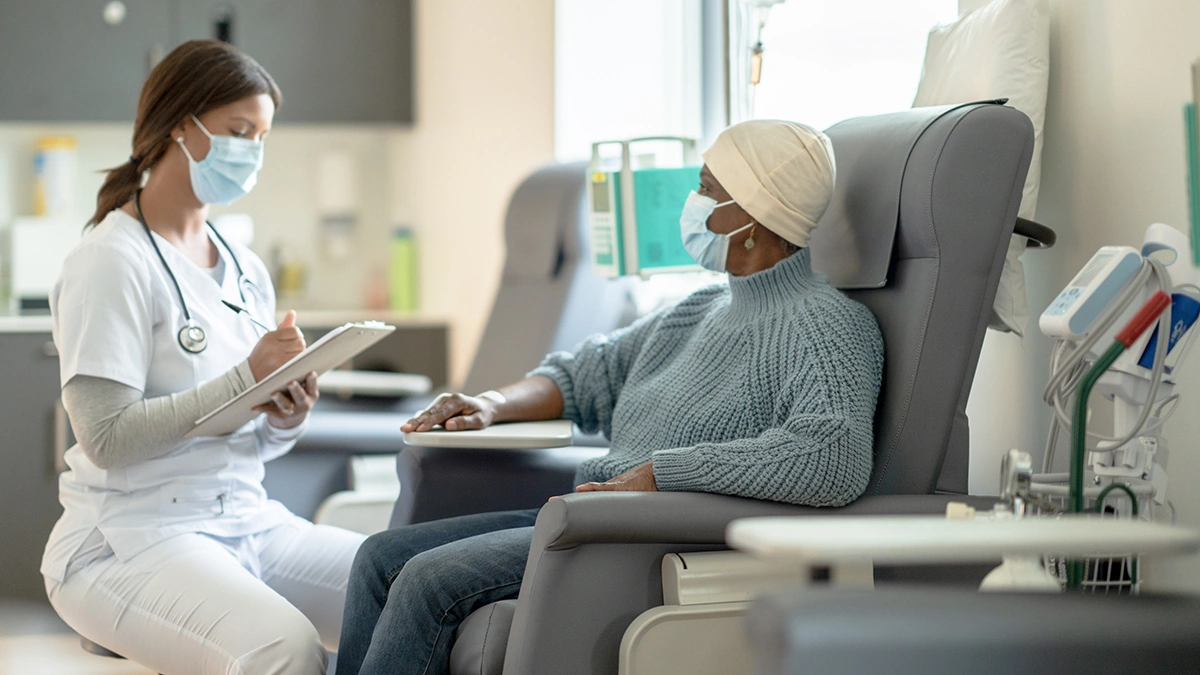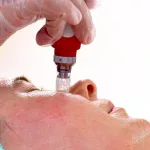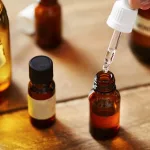Ever wonder why a single building can become a hotspot for a respiratory virus while the street outside seems perfectly safe? The answer lies in what we call “high‑risk settings.” In plain terms, these are places where people live, work, or play close together, often with limited air flow, and sometimes with vulnerable health conditions. Because viruses love crowds and stagnant air, the risk of infection skyrockets in such environments.
In this post I’ll walk you through exactly what makes a setting high‑risk, why it matters for respiratory virus screening, which tests work best, how to keep everyone safe, and real‑world stories that show the difference a solid plan can make. Grab a cup of coffee, settle in, and let’s demystify the science together.
Defining High‑Risk Settings
Defining Features
There are three hallmarks that turn an ordinary space into a high‑risk setting:
- Close proximity. When people share a room, a dormitory floor, a cafeteria table, or a locker room, droplets don’t have far to travel.
- Limited ventilation. Stale air lets viral particles linger. A low air‑change rate (fewer than six exchanges per hour) is a red flag.
- Vulnerable occupants. Elderly residents, people with weakened immune systems, pregnant individuals, or those with chronic lung disease are more likely to develop severe illness if they catch a virus.
Common Examples
Below is a quick snapshot of places that frequently appear on public‑health watchlists:
| Setting | Typical Occupancy | Ventilation Rating (ACH) | Screening Protocol (✓/✗) |
|---|---|---|---|
| Residential aged‑care facility | 80‑150 residents | 4‑6 | ✓ |
| University dormitory | 200‑500 students | 3‑5 | ✓ |
| Correctional facility | 1,000‑3,000 inmates | 2‑4 | ✓ |
| Seasonal worker housing | 150‑400 workers | 3‑5 | ✓ |
| Night‑club / bar | 200‑800 patrons | 1‑3 | ✗ (often) |
Why CDC Flags Them
Although the CDC’s recent guidance on congregate living settings was written for Mpox, the same principles apply to COVID‑19, influenza, and other respiratory viruses. The agency stresses that close‑quarter environments need proactive testing, strict hygiene, and rapid isolation to keep outbreaks from snowballing.
Why Settings Matter
Higher Detection Yield
Studies from Australia’s health department in early 2025 showed that routine testing in high‑risk settings uncovers more than twice the number of positive cases compared with random community testing. The simple logic is: the more people you test where the virus is likely to spread, the more you catch.
Impact on Outbreak Size
Modeling done by the WHO Western Pacific office (2020) predicts that early detection in congregate environments can cut total community cases by up to 40 %. That’s not just a number—it translates into fewer hospital beds filled, lower health‑care costs, and, most importantly, fewer families facing the pain of severe illness.
Economic & Social Stakes
Let’s break it down with a quick mental math exercise. A rapid PCR test costs roughly $50 per person. If you screen 500 staff members weekly, that’s $25,000 – a figure that sounds large until you realize a single uncontrolled outbreak can cost $10 000 + in emergency response, lost productivity, and, tragically, lives. The return on investment is clear.
Key Related Keywords
While we’re on the topic, you’ll also hear terms like COVID‑19 testing, infection prevention, and virus detection pop up. All of these are part of the same toolbox we’ll explore together.
Screening Tools Used
Nasal Swab Test
The nasal swab remains the gold‑standard for detecting SARS‑CoV‑2, influenza, and many other respiratory pathogens. A properly collected swab reaches the nasopharynx where viral load is highest, giving a sensitivity of about 95 % in most lab settings. If you’re curious about how the procedure feels, think of a gentle tickle rather than a painful poke.
Alternative Specimens
Not everyone likes the idea of a swab. Saliva PCR offers a less invasive option, though its sensitivity can dip a few points (around 88‑90 %). Antigen rapid tests are the fastest—results in 15 minutes—but they trade some accuracy for speed, especially in asymptomatic folks.
Choosing the Right Test
Here’s a quick decision‑tree you can print out:
- If you have a dedicated nursing crew, a weekly PCR nasal swab is the safest bet.
- If resources are tight, pair twice‑weekly antigen tests with a confirmatory PCR for any positive result.
- For home‑based screening in dorms, saliva PCR strikes a good balance.
Implementation Checklist
- Secure swabs, transport media, and a reliable lab partner.
- Train staff—watch a short video on proper technique (the difference between a nasopharyngeal and a nasal swab is real!).
- Document every result in a secure, auditable database—privacy matters.
- Set up a clear communication plan for positive results, including isolation instructions and mental‑health support.
For a deeper dive into how the swab works, check out our guide on the nasal swab test.
Infection‑Prevention Best Practices
Core PPE & Hand Hygiene
Personal protective equipment (PPE) isn’t just for doctors. In high‑risk settings, every worker should have easy access to gloves, gowns, eye protection, and, when aerosol‑generating procedures are performed, an N95 or higher‑rated respirator. Hand‑rub stations should be placed at every entry, exit, and high‑traffic zone.
Environmental Controls
Ventilation is the unsung hero of infection control. Aim for at least six air changes per hour (ACH). If the building’s HVAC can’t meet that, portable HEPA filters are a quick fix. Keep doors closed where possible, and avoid “dead‑air” pockets where air circulates poorly.
Routine Testing Cadence
Most facilities adopt a weekly PCR schedule for staff and a bi‑weekly schedule for residents. The cadence can be adjusted based on community transmission levels—ramp up testing when cases surge, and consider scaling back when the numbers stay low for several weeks.
Resources
Our infection prevention page offers printable posters, detailed PPE checklists, and step‑by‑step cleaning protocols you can paste on walls today.
External Evidence
According to a study published in Lancet Respiratory Medicine (2024), upgrading ventilation in a 200‑bed aged‑care home cut the basic reproduction number (R₀) from 3.2 to 1.1 within a month, illustrating that airflow matters as much as testing.
Real‑World Case Studies
Healthcare Facility Rollout
A 150‑bed aged‑care center in Ohio introduced weekly PCR testing for all staff and residents, coupled with strict PPE use. In the first six months, they recorded only one COVID‑19 case (which was caught in the pre‑symptomatic stage) versus twelve cases in a comparable facility that relied solely on symptom screening.
University Dormitory Pilot
At a Midwest university, a 300‑student dorm implemented rapid antigen testing twice a week during the spring semester. Three asymptomatic carriers were identified early, isolated, and treated, preventing what could have become a campus‑wide outbreak. The students appreciated the “quick‑check” approach and reported low testing fatigue.
Correctional Facility Lessons
In a state prison where ventilation was initially poor, a sudden outbreak infected 28 inmates. After installing portable HEPA units and moving to weekly PCR testing, new cases dropped to zero within three weeks. The key takeaway? Engineering controls and testing together are a powerful combo.
Key Takeaways
- Early detection—especially in the first five days of exposure—saves lives.
- Staff compliance with testing and PPE protocols is the linchpin of success.
- Environmental upgrades amplify the impact of any screening program.
Want to see how you can set up a testing schedule yourself? Our virus detection guide walks you through sample collection logistics, result tracking, and communication best practices.
Balancing Benefits and Risks
Benefits
When you screen regularly, you catch infections before they spread. That means fewer sick days, reduced hospitalizations, and peace of mind for families. Moreover, the data you collect helps public‑health officials allocate resources where they’re needed most.
Potential Drawbacks
No approach is perfect. False‑positive results can cause unnecessary isolation, anxiety, and logistical headaches. Testing fatigue—especially in settings where people are polled weekly—can erode compliance over time.
Mitigation Strategies
- Confirm any positive rapid test with a PCR before taking drastic action.
- Provide clear, compassionate communication explaining why testing matters.
- Offer mental‑health resources and practical support (e.g., paid sick leave) to ease the burden of isolation.
Bottom‑Line
Think of screening as a safety net. It isn’t a guarantee, but it dramatically reduces the chances of a hidden infection spiraling out of control. By weighing the upside of early detection against the occasional inconvenience, you can make an informed, compassionate decision for your community.
Takeaway and Action
Let’s recap in a friendly checklist:
- Identify whether your location fits the high‑risk criteria (crowding, ventilation, vulnerable occupants).
- Choose the appropriate test—nasal swab PCR for maximum sensitivity, saliva PCR for comfort, or rapid antigen for speed.
- Implement a testing cadence that matches your risk level (weekly staff, bi‑weekly residents is a common baseline).
- Upgrade ventilation or add HEPA filters where possible.
- Equip staff with proper PPE and hand‑hygiene stations.
- Communicate results promptly and compassionately; support anyone who must isolate.
- Review outcomes regularly and adjust frequency or protocols as community transmission changes.
Now, a quick personal note: when I helped a local shelter set up a screening program last winter, the first day felt chaotic—boxes of swabs, nervous volunteers, a lot of “what‑ifs.” But within a week, we caught two asymptomatic cases, isolated them, and the shelter avoided a full‑blown outbreak. The gratitude from residents and staff was palpable, and it reminded me that these steps, while systematic, are ultimately about caring for real people.
What’s your situation? Are you managing a dorm, a care home, or perhaps a workplace where people spend long hours together? Take the first step today: audit your ventilation, talk to a local lab about testing options, and start a conversation with your team about how to keep everyone safe. If you have any questions, feel free to reach out—your community will thank you.


















Leave a Reply
You must be logged in to post a comment.